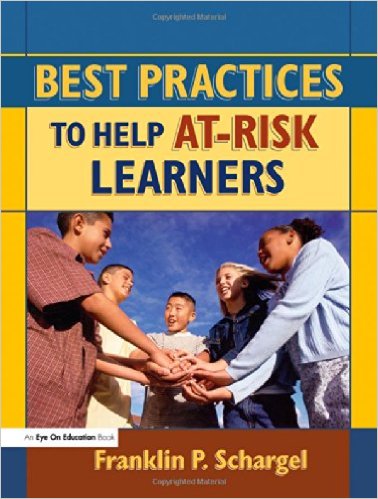“Thank you soooo much! I appreciate all of your help getting started (and finished) with this course! “
- 3 Credits -

3 Semester Credits
(post-baccalaureate
PD credits for re-certification and
pay-lane increases)
- accredited nationwide
- start any time
- up to 5 months to complete
- independent study
- all course materials included with course tuition
- view FAQ
Course Description
This course presents 46 research-based tools, worksheets and resources which have been field-tested at schools and in dropout prevention programs nationwide. They help teachers, administrators, counselors and special educators who work with at-risk learners. It also explores the 15 strategies identified by the National Dropout Prevention Center. The book has indexes by grade level, job title and by individual strategy. Educators will research the topic; develop writings, lessons or activities for classroom applications that help at-risk students to be successful in school.
Teacher feedback about this course



$425
3 Semester Graduate Credits
At-Risk Learners: Best Practices
- 3 Graduate Credits -



Course Objectives
- Educators will acquire a framework of working knowledge to teach at-risk students.
- Participants taking this course will learn about ways of encouraging students to think about staying in school and how to make schools family friendly.
- Educators will learn how to identify high-performing at-risk students and what parents can do to intervene when their child begins to fail in school.
- Participants will explore the best practices and strategies that can help reduce school disenfranchisement and potential dropouts.
- Educators will research the topic, develop a lesson or activities that utilizes strategies in the book and use the instructional techniques for improving student achievement.
Credit Hours
3 Semester Credits (post-baccalaureate professional development credit)
Course Instructor
Joseph C’de Baca MaEd.
Grade Type
University Transcript: Click Here For Details
At-Risk Learners: Best Practices
What Others Are Saying About This Course
Vicki W. – OH –
Carol M. – CO –
Alexis L. – PA –
“Thank you very much for getting back to me so quickly! I just have one more question. Is there any way I can get an electronic copy of my receipt for these two courses? Thank you so much for your time. I’ll be sure to let more of my colleagues know about the wonderful opportunities you present to educators for continuing education!“
David H. – TN –
“I’ve been working on the “Dropout Dilemma” and will probably finish it up tomorrow. Just want to say that I’ve enjoyed becoming acquainted with your viewpoints in “Understanding Hispanic Students” and the “Dropout Dilemma.” … it is refreshing to hear someone in education speak the truth without fear of offending the politically correct. Your observations and recommendations for improving education are spot-on. I can tell you have spent some time in the real-life classroom environment. Thanks for everything”
David H. – TN –
“Once again, I really enjoyed the course and got a lot out of it. Thanks.”
David H. – TN –
“Really enjoyed the course and got a lot out of it. Thanks so much!”
TLC Testimonials

